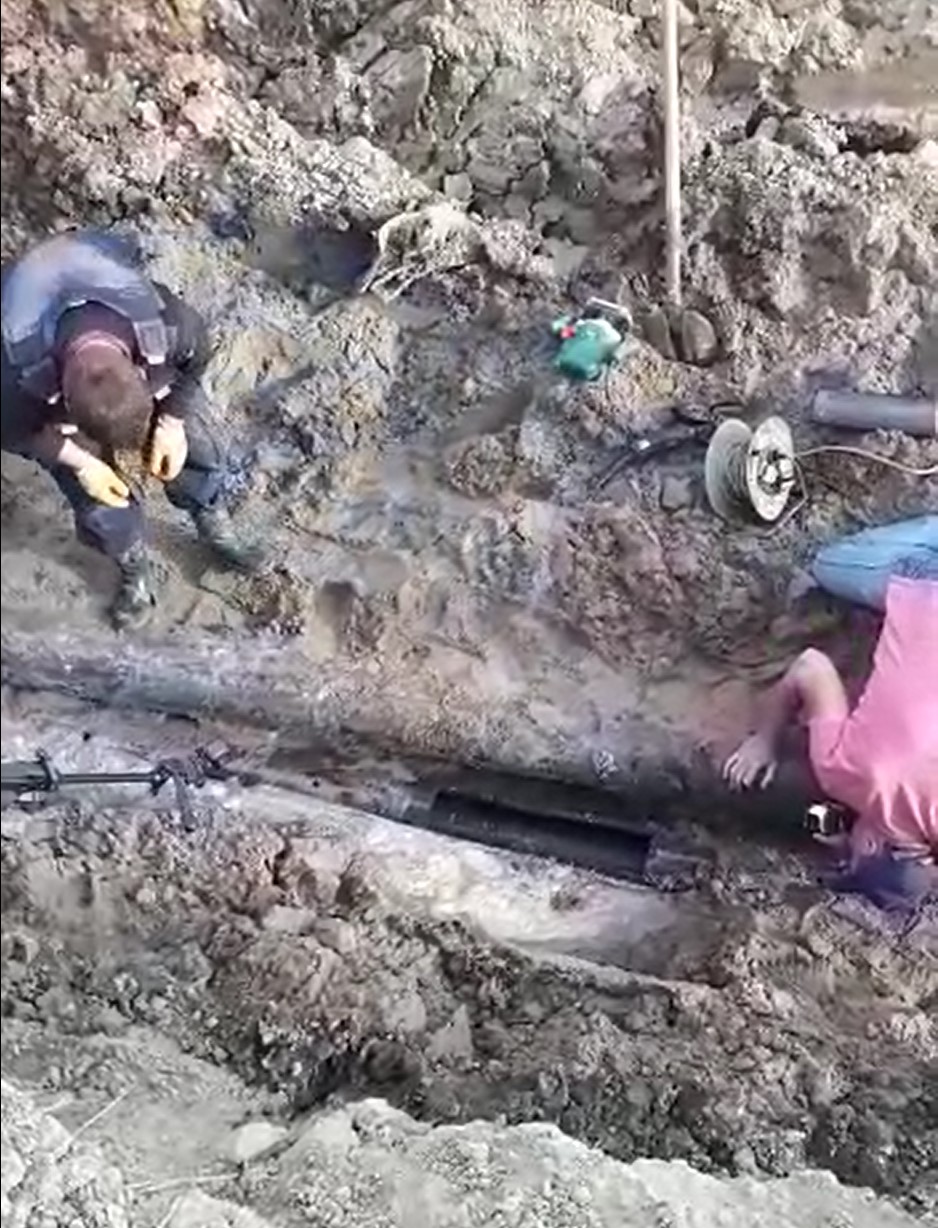
Cable fault locating in pipes – everything we dreamed of
When we were little boys and girls, many of us liked:
1️⃣ Sit in the sandbox and dig the sand with a shovel.
2️⃣ Shoot from an imaginary space weapon.
3️⃣ Play hide-and-seek with each other.
In the attached video, the team of cable specialists, despite their advanced age, was quite able to return to their childhood. Why do I think that? Because they are trying to find damage of the cable laid in the pipe.
So, in this video, specialists:
1️⃣ Dug out with an excavator and shovels a section of the route of a high-voltage cable (110 kV) laid in a polymer pipe.
2️⃣ They opened (cut) a polymer pipe with a saw and are trying to hear where (from the left or right part of the pipe) the sounds of “space weapons” come from (the weapon is a wave generator connected at the end of the cable and providing a pulse breakdown of the damage site of the cable outer sheath, the sounds of which we repeatedly hear).
3️⃣ Despite the efforts (points 1 and 2), the exact place of cable damage remains undetected, and the “hide-and-seek” game continues (as far as I know, it lasted about a week).
Is it not a dream to return to childhood? Alas, this is not a dream, but the hard-working days of specialists who are engaged in service (testing and damage locating) of cable lines laid in pipes.
Manufacturers of polymer pipes (made of PE, PVC) are proud to produce and supply excellent reliable modern pipes for cables laying. Manufacturers of equipment for cable testing and damage locating are rightfully proud of their modern intellectual high-voltage mobile laboratories (Megger, Baur, Highvolt). The only problem is that these pipes and these labs still don’t fit well together. Despite the beautiful catalogs.
Over the years, the number of cable lines laid in pipes has been constantly increasing, and the problem of testing and locating of damages of such cables has not yet been solved. I believe, we need to stop pretending that the problem does not exist and start looking for a solution. Cigre’s efforts are minimal, and what they offer is not enough.
The solution is to develop special polymer (not metal) pipes for laying cable lines that would not isolate the cable from the ground and would not interfere with the procedure for testing and damage locating of laid cables.
